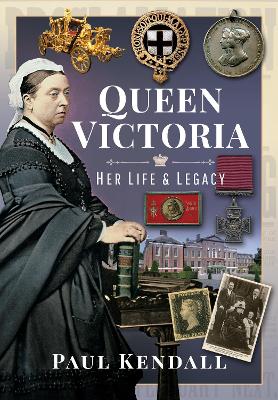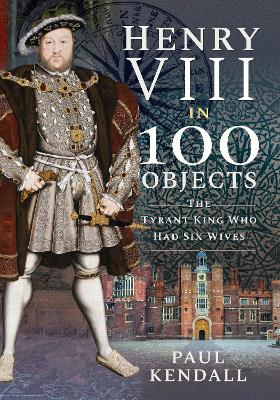In 100 Objects
2 total works
For almost 64 years, Queen Victoria reigned over Great Britain during a period which saw the country become the most powerful and prestigious in the world and one which experienced enormous social, political and industrial change. Those changes were embraced by Victoria, who became the first monarch to use the railway as a mode of transport, to use anaesthetic to alleviate pain, during childbirth, and to use a telephone.
At the very start of her reign, she took an interest in politics, playing an active part in the machinations of government, and worked with ten prime ministers. She broke down barriers between sovereign and her subjects, ensuring that she was visible to the public. Victoria established the tradition of the white wedding, wearing a white bridal dress to ensure that her subjects could see her with the coronation route lengthened to maximise her exposure. She set the tradition of acknowledging her subjects from the balcony at Buckingham Palace during times of national celebration. She also paid regular visits to hospitals in England to visit wounded soldiers, and instigated the medal named after her which became the highest honour a man could receive fighting for his country.
All aspects of Victoria's life from Kensington Palace, her birthplace to Frogmore Mausoleum, are covered within this volume. Her personal life as well as her public persona are examined with illustrations of many of the places and palaces that were significant in her life -such as the site of the Fox & Crown public house on West Hill, Highgate, where, the landlord stepped out to halt the horses of Victoria coach which was careering out of control, or the point along Constitution Hill where the first assassination attempt was made on Victoria's life.
Equally displayed in this unique collection are fascinating artifacts that epitomise her reign, for example, the world's first pre-paid adhesive postage stamp, the Penny Black which, of course, bore her image, and the gold enamelled brooch presented by Queen Victoria to Florence Nightingale in 1855 for her work in Crimea.
_Queen Victoria: Her Life and Legacy_ is a journey in gloriously-coloured images through one of Britain's greatest eras -the age of Victoria.
At the very start of her reign, she took an interest in politics, playing an active part in the machinations of government, and worked with ten prime ministers. She broke down barriers between sovereign and her subjects, ensuring that she was visible to the public. Victoria established the tradition of the white wedding, wearing a white bridal dress to ensure that her subjects could see her with the coronation route lengthened to maximise her exposure. She set the tradition of acknowledging her subjects from the balcony at Buckingham Palace during times of national celebration. She also paid regular visits to hospitals in England to visit wounded soldiers, and instigated the medal named after her which became the highest honour a man could receive fighting for his country.
All aspects of Victoria's life from Kensington Palace, her birthplace to Frogmore Mausoleum, are covered within this volume. Her personal life as well as her public persona are examined with illustrations of many of the places and palaces that were significant in her life -such as the site of the Fox & Crown public house on West Hill, Highgate, where, the landlord stepped out to halt the horses of Victoria coach which was careering out of control, or the point along Constitution Hill where the first assassination attempt was made on Victoria's life.
Equally displayed in this unique collection are fascinating artifacts that epitomise her reign, for example, the world's first pre-paid adhesive postage stamp, the Penny Black which, of course, bore her image, and the gold enamelled brooch presented by Queen Victoria to Florence Nightingale in 1855 for her work in Crimea.
_Queen Victoria: Her Life and Legacy_ is a journey in gloriously-coloured images through one of Britain's greatest eras -the age of Victoria.
Henry VIII is one of history's most memorable monarchs. Popularly known for his six wives, and the unfortunate fate which befell Anne Boleyn and Catherine Howard, Henry initiated many reforms and changes which still affect our lives today.
The annulment of his marriage to Catherine of Aragon set in motion the separation of the English church from Rome and the establishment of the Church of England, which in turn led to the dissolution of the monasteries, the hauntingly evocative remains of which can be seen across the United Kingdom. Henry also oversaw the legal union between England and Wales, and he is also known as the father of the Royal Navy', with one of his great warships, the _Mary Rose_, lost in 1545 and recovered in 1982, becoming one of the most famous wrecks in maritime history.
In addition to the monasteries, other buildings around the UK continue to remind us of the times of the Tudors -there is the site of Greenwich Palace at the Royal Naval College Greenwich, where Henry was born; his great palace at Hampton Court; Lambeth Palace where Thomas More refused to sign the oath to make Henry the Head of the Church, and the Bell Tower in the Tower of London where More was imprisoned before he was beheaded.
Henry's breach with the Pope led to the threat of war with Catholic France and Spain, which prompted Henry to construct a series of powerful forts around the English and Welsh coasts. These elegant and symmetrical defensive structures are still awe-inspiring.
In this engaging and hugely informative book, the author takes us on a journey across the country, from Deal Castle on the south coast, to Tower Green where Anne Boleyn and Catherine Howard lost their heads, and far north to Rievaulx Abbey in Yorkshire. Along the way we see places where Henry stayed, where the _Mary Rose_ was recovered, the homes of his consorts and Smithfield where prominent individuals convicted of heresy were burned at the stake. Travel, then, not just across the country, but also back in time through 100 objects from the days of the second Tudor monarch -Henry VIII.
The annulment of his marriage to Catherine of Aragon set in motion the separation of the English church from Rome and the establishment of the Church of England, which in turn led to the dissolution of the monasteries, the hauntingly evocative remains of which can be seen across the United Kingdom. Henry also oversaw the legal union between England and Wales, and he is also known as the father of the Royal Navy', with one of his great warships, the _Mary Rose_, lost in 1545 and recovered in 1982, becoming one of the most famous wrecks in maritime history.
In addition to the monasteries, other buildings around the UK continue to remind us of the times of the Tudors -there is the site of Greenwich Palace at the Royal Naval College Greenwich, where Henry was born; his great palace at Hampton Court; Lambeth Palace where Thomas More refused to sign the oath to make Henry the Head of the Church, and the Bell Tower in the Tower of London where More was imprisoned before he was beheaded.
Henry's breach with the Pope led to the threat of war with Catholic France and Spain, which prompted Henry to construct a series of powerful forts around the English and Welsh coasts. These elegant and symmetrical defensive structures are still awe-inspiring.
In this engaging and hugely informative book, the author takes us on a journey across the country, from Deal Castle on the south coast, to Tower Green where Anne Boleyn and Catherine Howard lost their heads, and far north to Rievaulx Abbey in Yorkshire. Along the way we see places where Henry stayed, where the _Mary Rose_ was recovered, the homes of his consorts and Smithfield where prominent individuals convicted of heresy were burned at the stake. Travel, then, not just across the country, but also back in time through 100 objects from the days of the second Tudor monarch -Henry VIII.

